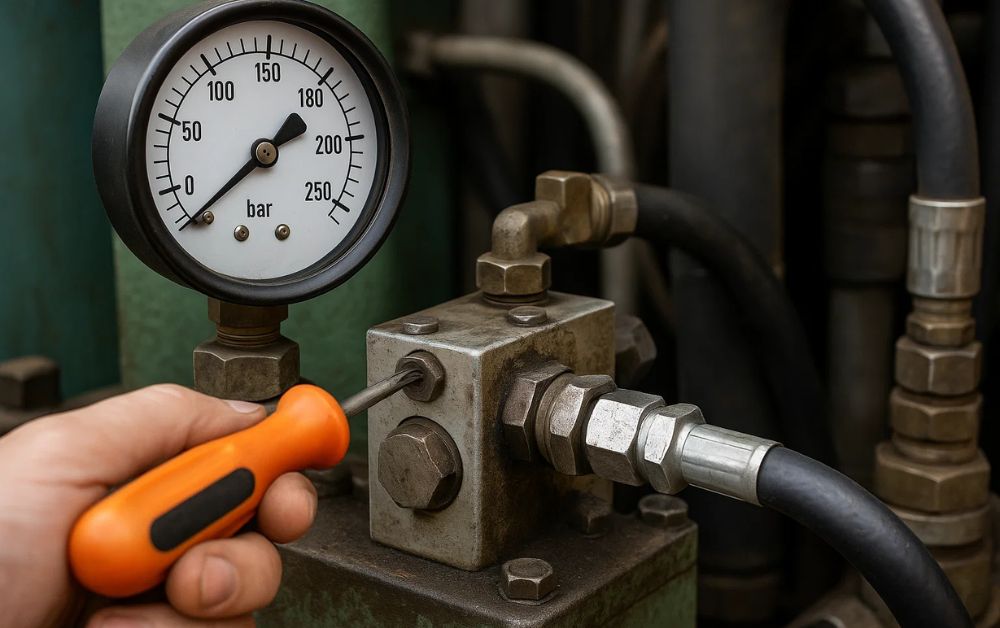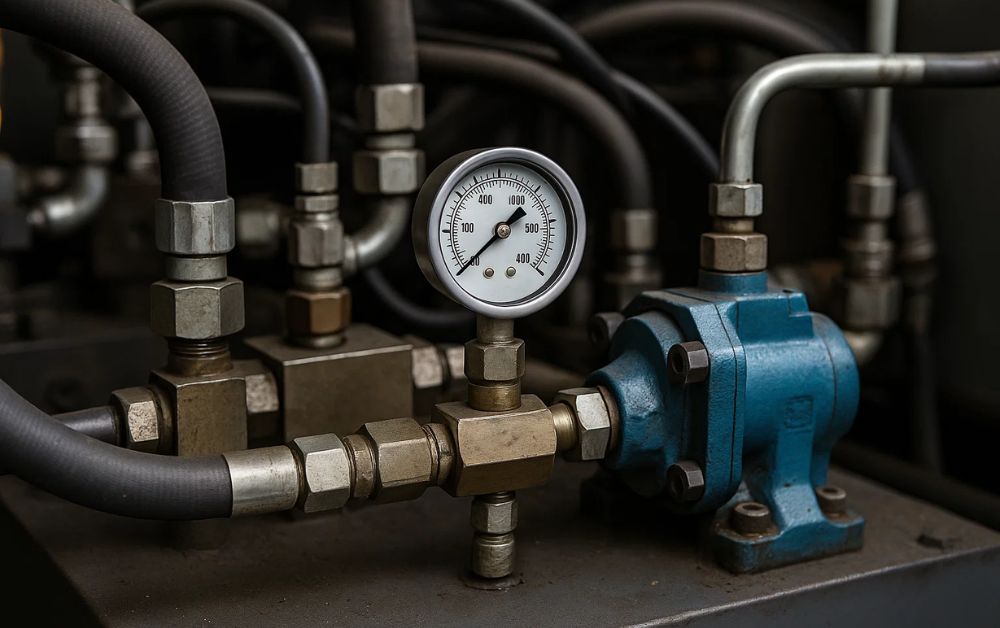Hydraulic systems are the powerhouse behind a wide range of industrial and mobile machinery — from construction equipment and agricultural machines to heavy manufacturing tools and aviation systems. These systems provide the strength, speed, and precision required for critical operations. However, when a problem arises, it can lead to serious downtime, loss in productivity, and unexpected repair expenses.
Knowing the fundamentals of Hydraulic System Troubleshooting can save you thousands in repairs and hours of lost work. In this guide, we’ll cover the top 10 troubleshooting tips that will help you prevent costly downtime and maintain the health of your hydraulic systems.

1. Start with a Visual Inspection
Before diving deep into diagnostics, begin with a basic visual check. Look for obvious issues like hydraulic fluid leaks, cracked hoses, loose fittings, or damaged seals. Many hydraulic problems stem from issues that are easily visible but often overlooked.
Pro Tip: Check for puddles under the system and oil stains around connectors. A small leak can quickly turn into a major problem if ignored.
2. Check Hydraulic Fluid Levels and Quality
Low or contaminated fluid is one of the most common causes of hydraulic failure. As part of your Hydraulic System Troubleshooting, inspect the fluid level and check its condition. Milky, dark, or gritty fluid indicates contamination or degradation.
Pro Tip: Always use manufacturer-recommended hydraulic fluids and ensure they’re clean and at the right viscosity.
3. Monitor System Temperature
Overheating is a red flag in hydraulic systems. High temperatures degrade hydraulic fluid and can damage seals, hoses, and valves. If the system is running hot, check for clogged coolers, low fluid levels, or overworked pumps.
Pro Tip: Install temperature gauges on your hydraulic reservoir and critical components to monitor temperature in real-time.
4. Listen for Unusual Noises
Whining, knocking, or grinding sounds are not normal in a healthy hydraulic system. These noises often indicate cavitation (air bubbles in the fluid) or pump failure. Use a mechanic’s stethoscope or simply listen carefully during operation.
Pro Tip: Noise during system operation is often one of the first indicators of internal damage.
5. Inspect the Hydraulic Pump
The pump is the heart of any hydraulic system. If it fails, the entire system fails. Look for signs of low pressure, vibration, or leaks around the pump area. A worn or damaged pump can cause major inefficiencies.
Pro Tip: Regularly check pump inlet filters and strainers for blockages that can starve the pump of fluid.
6. Verify Pressure Settings
Incorrect pressure settings can cause slow operation or even failure to perform tasks. Use a pressure gauge to verify system pressure is within the specified range. Incorrect relief valve settings can also result in system inefficiency.
Pro Tip: Always check the system’s pressure against the OEM specifications during troubleshooting.
7. Check Actuators and Cylinders
Hydraulic actuators and cylinders convert hydraulic power into mechanical force. If you’re experiencing sluggish or uneven motion, check for internal leaks or damaged seals in these components.
Pro Tip: A cylinder that drifts or fails to hold its position under load may have internal bypassing issues.
8. Inspect Filters and Strainers
Clogged filters restrict fluid flow and increase pressure drop in the system, which can damage sensitive components. During your Hydraulic System Troubleshooting, inspect and replace filters at recommended intervals.
Pro Tip: Use pressure gauges before and after filters to measure the pressure differential and detect clogging early.
9. Assess the Hydraulic Control Valves
Faulty or sticking valves can disrupt the fluid path and prevent proper system function. Check if the control valves are responding correctly and inspect for signs of contamination or internal leakage.
Pro Tip: Clean valve spools and use contamination-free hydraulic fluid to prevent sticking and damage.
10. Check for Air Entrapment
Air in a hydraulic system can cause foaming, erratic movement, and reduced efficiency. Bleed the system to remove trapped air and inspect return lines for signs of aeration.
Pro Tip: Use anti-aeration tank designs and ensure suction lines are airtight to prevent air from entering the system.
Why Timely Troubleshooting Matters
Neglecting early warning signs in a hydraulic system can result in:
- Unexpected equipment failure
- Higher repair costs
- Lost productivity
- Safety hazards for operators
By following these Hydraulic System Troubleshooting tips, you can proactively detect issues before they turn into bigger, costlier problems.
When to Call the Professionals
While basic troubleshooting can be done in-house, some problems require expert attention. If you’re unsure of the issue or the system requires advanced diagnostics, it’s always better to consult professionals who specialize in hydraulic systems.

Conclusion: Power Hydraulics — Your Trusted Partner in Hydraulic System Troubleshooting
If you’re looking for experienced professionals to handle complex Hydraulic System Troubleshooting, Power Hydraulics is the name you can rely on. With deep industry expertise, cutting-edge tools, and a commitment to quality service, Power Hydraulics helps businesses minimize downtime and maintain peak performance. Whether you need on-site diagnostics, component repair, or a complete system overhaul, their expert technicians ensure your hydraulic systems operate safely and efficiently. Trust Power Hydraulics to keep your operations running smoothly—because in hydraulics, precision and reliability are everything.



